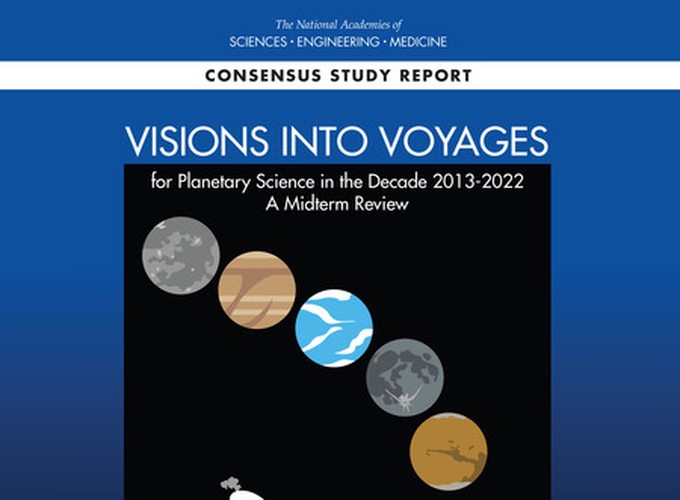NASA is required to conduct decadal surveys by law, and is also required to conduct midterm assessments of their progress toward meeting the goals of the decadal survey. The most recent planetary science decadal survey, Vision and Voyages for Planetary Science in the Decade 2013-2022 (NRC, 2011), was released in March 2011. In 2018, the National Academies of Sciences, Engineering, and Medicine published the Visions into Voyages for Planetary Science in the Decade 2013-2022: A Midterm Review (https://doi.org/10.17226/25186).
The report points out that the third prioritised large strategic (flagship)-class mission in Vision and Voyages was a Uranus Orbiter and Probe mission (after Mars and Europa missions), but that this has not yet been initiated. The choice of Uranus over Neptune was for practical reasons (trajectories, flight times, and cost), as opposed to scientific ones — the decadal survey committee stated that both ice giants and their moons are equally scientifically interesting.
They confirmed that “the notional ice giants mission described in Vision and Voyages would address a broad range of ice giant science objectives using mature instrumentation. The objectives of the mission concept described in a NASA-sponsored 2017 ice giants study have been changed significantly from the original Vision and Voyages science objectives. The committee found that the scientific payload proposed in the study carries significant risk of failing to make the measurements proposed in Vision and Voyages. New objectives were proposed in the ice giants study. The mission concept is ambitious in investigating the interior structure of an ice giant using a Doppler imager, analogous to undertaking helioseismological investigations of the Sun. This approach at any giant planet, including ice giants, is currently unproven theoretically or experimentally. If this component of the mission were not successful scientifically, a large part of the revised science objectives would be degraded or lost.” The report therefore recommended that “NASA should perform a new mission study based on the original ice giants science objectives identified in Vision and Voyages to determine if a more broad-based set of science objectives can be met within a $2 billion cost cap.”
The report also highlighted some of the technology needs for future ice giant missions, ranging from aerocapture, Advanced solar arrays, Multi-Mission Radioisotope Thermoelectric Generators (MMRTGs), and next-generation electric propulsion, Next Generation Optical Communications, High-temperature electronic packaging for extreme environments, and heat-shield technology for planetary entry and sample return. Ice giant missions require nuclear power because of their tremendous distances from the Sun. NASA has now focused its nuclear power technology development on an enhanced MMRTG, and is proceeding with a technology decision planned in 2019.
The next US decadal survey in planetary science is expected to commence in the early 2020s, and with the Mars and Europa elements of the previous decade well underway, it is hoped that the long-awaited flagship-level mission to Uranus or Neptune may finally begin in earnest.
